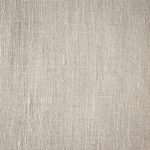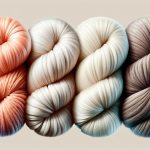While some fabrics feel soft and luxurious, others boast unmatched durability and sustainability. If you’re looking for textiles that stand the test of time, you’ll want to explore the standout options available. From resilient hemp to breathable linen and robust wool, each fiber has unique qualities that cater to both style and functionality. So, what makes these natural fibers the go-to choices for clothing and home goods? Let’s examine their strengths.
Table of Contents
Key Takeaways
- Hemp is highly durable, resistant to mold and UV rays, making it ideal for long-lasting clothing and home goods.
- Linen is known for its strength and longevity, often outlasting cotton while becoming softer with each wash.
- Wool provides excellent insulation and durability, maintaining its shape and warmth even after repeated use and washing.
- Cotton offers versatility and durability, making it a reliable choice for both clothing and home textiles, while being easy to care for.
- Bamboo is soft yet strong, combining durability with moisture-wicking properties, suitable for various clothing applications.
Hemp: The Ultimate Sustainable Fiber
When you think about sustainable fibers, hemp stands out as a top contender. Its rapid growth and low environmental impact make it a smart choice for eco-conscious consumers.
Hemp requires minimal water and no pesticides, making it a resilient option that thrives in various climates. You’ll find hemp fabrics aren’t only durable but also breathable and moisture-wicking, perfect for both clothing and home goods.
Additionally, hemp’s natural resistance to mold and UV rays adds to its appeal. By choosing hemp, you support sustainable practices and reduce your carbon footprint.
Cotton: A Versatile and Durable Choice
Cotton stands out as one of the most versatile and durable fibers in the textile industry. You’ll find it in everything from casual t-shirts to high-quality bed linens.
Its softness and breathability make it comfortable to wear year-round, while its durability guarantees that garments can withstand regular use and frequent washing.
Cotton’s natural absorbency also keeps you cool in the summer and warm in the winter, enhancing its appeal for clothing. Plus, it’s easy to dye, allowing for a wide range of colors and styles.
When you choose cotton for your home goods, like towels and curtains, you’re investing in longevity and ease of care.
Linen: Breathable and Long-lasting
Linen offers a unique alternative to cotton, bringing its own set of benefits to the table. Its breathability makes it perfect for warm weather, helping you stay cool and comfortable.
Unlike other fabrics, linen wicks moisture away, so you won’t feel sticky on hot days. Plus, it’s incredibly strong and durable, often lasting years longer than cotton with proper care.
Linen excels at moisture-wicking and durability, outlasting cotton while keeping you cool and comfortable on warm days.
You’ll also appreciate its natural texture and crisp appearance, which can elevate any outfit or home decor.
When you wash linen, it becomes softer without losing its integrity, making it even more enjoyable over time.
If you’re looking for a fabric that combines longevity with comfort, linen is definitely a choice worth considering for both clothing and home goods.
Wool: Insulation and Durability Combined
While many fabrics struggle to balance warmth and durability, wool excels in both areas, making it an exceptional choice for clothing and home goods. Its unique properties offer insulation that keeps you cozy while also being resilient, ensuring your garments and textiles stand the test of time.
- Naturally moisture-wicking, keeping you dry
- Odor-resistant, perfect for active wear
- Flame-retardant, adding a safety layer
- Biodegradable, making it eco-friendly
Choosing wool means investing in quality. You’ll enjoy a fabric that not only keeps you warm but also withstands daily wear and tear.
Whether it’s a cozy sweater or a durable blanket, wool delivers comfort and longevity, making it a staple in your wardrobe and home.
Bamboo: Lightweight and Moisture-Wicking
When it comes to lightweight and moisture-wicking fabrics, bamboo stands out as a remarkable choice. You’ll find that bamboo fibers are incredibly soft, making them comfortable against your skin.
This natural fiber excels at moisture-wicking, drawing sweat away from your body and keeping you dry during hot days or intense workouts. Plus, bamboo’s breathability helps regulate your temperature, ensuring you stay cool.
Another benefit is its hypoallergenic properties, which make bamboo ideal for sensitive skin. When you wear bamboo clothing, you can enjoy a fresh feel even after hours of use.
Whether you’re looking for activewear, sleepwear, or everyday essentials, bamboo provides an excellent combination of comfort and functionality that you won’t want to overlook.
Comparing Durability Among Natural Fibers
Although natural fibers like cotton, wool, and hemp each offer unique benefits, their durability can vary considerably.
When choosing the right fiber for your clothing or home goods, it’s essential to understand how they stack up regarding toughness. Here’s a quick comparison:
- Cotton: Soft and breathable but can wear down quickly with frequent washing.
- Wool: Naturally resilient and resistant to wrinkling, but may shrink if not cared for properly.
- Hemp: Exceptionally strong and long-lasting, often outlasting cotton and linen.
- Silk: Luxurious and lightweight, but can be delicate and prone to damage.
The Environmental Impact of Natural Fibers
Natural fibers have a significant environmental footprint, impacting everything from soil health to water usage. When you choose cotton, for instance, consider that it requires substantial water and often involves pesticides that can harm local ecosystems.
However, opting for organic cotton or hemp can mitigate these issues, as they typically use fewer chemicals and promote healthier soil.
You should also think about the land needed for growing these fibers; some, like bamboo, regenerate quickly, making them more sustainable.
It’s essential to weigh these factors when selecting natural fibers for your clothing and home goods. By being mindful of your choices, you can support practices that benefit both the environment and your wardrobe.
Frequently Asked Questions
How Do Natural Fibers Compare to Synthetic Fibers in Durability?
Imagine wearing a pair of jeans that lasts for years. Natural fibers generally offer less durability than synthetics, but they breathe better and age gracefully, giving you comfort and character that synthetic materials can’t replicate.
What Are the Best Natural Fibers for Sensitive Skin?
If you have sensitive skin, opt for soft, breathable natural fibers like cotton and bamboo. These materials minimize irritation, keeping you comfortable. Avoid rough fabrics, and always check for hypoallergenic options to enhance your skin’s health.
Can Natural Fibers Be Blended With Synthetic Materials?
Yes, you can blend natural fibers with synthetic materials. This combination often enhances durability and versatility, allowing you to enjoy the comfort of natural fibers while benefiting from the strength and elasticity of synthetics.
How Do I Care for and Maintain Natural Fiber Clothing?
You might think caring for natural fibers is tricky, but it’s simple! Wash gently in cool water, avoid harsh detergents, and air dry. This keeps your clothes looking great and lasting longer, saving you money.
Are There Any Allergens Associated With Natural Fibers?
Yes, natural fibers can cause allergic reactions in some people. Common allergens include wool and silk. If you experience irritation, it’s best to consult a healthcare professional to identify the specific fiber causing your discomfort.
- How Is Katan Organza Fabric Made? - June 29, 2025
- The Rise of Semi Katan Silk: A Budget-Friendly Alternative - June 29, 2025
- Sourcing Authentic Banarasi Katan Fabric: A Buyer’s Checklist - June 29, 2025







